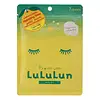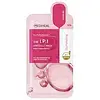What's inside
What's inside
 Key Ingredients
Key Ingredients

 Benefits
Benefits

 Concerns
Concerns

 Ingredients Side-by-side
Ingredients Side-by-side

Water
Skin ConditioningGlycerin
HumectantButylene Glycol
HumectantMaltitol
HumectantGlycosyl Trehalose
Emulsion StabilisingHydrogenated Starch Hydrolysate
HumectantCitrus Junos Fruit Extract
Skin ConditioningCitrus Unshiu Peel Extract
MaskingAscorbyl Glucoside
AntioxidantCitrus Junos Peel Oil
AstringentCitrus Aurantium Dulcis Peel Oil
MaskingRosmarinus Officinalis Leaf Oil
MaskingOriganum Majorana Leaf Oil
MaskingThymus Vulgaris Oil
MaskingPEG-40 Hydrogenated Castor Oil
EmulsifyingCarbomer
Emulsion StabilisingXanthan Gum
EmulsifyingPotassium Hydroxide
BufferingDisodium EDTA
Phenoxyethanol
PreservativeMethylparaben
PreservativeWater, Glycerin, Butylene Glycol, Maltitol, Glycosyl Trehalose, Hydrogenated Starch Hydrolysate, Citrus Junos Fruit Extract, Citrus Unshiu Peel Extract, Ascorbyl Glucoside, Citrus Junos Peel Oil, Citrus Aurantium Dulcis Peel Oil, Rosmarinus Officinalis Leaf Oil, Origanum Majorana Leaf Oil, Thymus Vulgaris Oil, PEG-40 Hydrogenated Castor Oil, Carbomer, Xanthan Gum, Potassium Hydroxide, Disodium EDTA, Phenoxyethanol, Methylparaben
Water
Skin ConditioningButylene Glycol
HumectantPropanediol
SolventNiacinamide
SmoothingGlycerin
Humectant1,2-Hexanediol
Skin ConditioningCarbomer
Emulsion StabilisingTromethamine
BufferingBetaine
HumectantTrehalose
HumectantPanthenol
Skin ConditioningPolyglyceryl-10 Laurate
Skin ConditioningSalix Alba Bark Extract
AstringentAllantoin
Skin ConditioningAdenosine
Skin ConditioningChamaecyparis Obtusa Leaf Extract
Skin ConditioningDisodium EDTA
Gluconic Acid
Sodium Ascorbyl Phosphate
AntioxidantMandelic Acid
AntimicrobialCapryloyl Salicylic Acid
ExfoliatingLactobionic Acid
BufferingGlycine
BufferingGlutamic Acid
HumectantSodium Hyaluronate Crosspolymer
HumectantAspartic Acid
MaskingTranexamic Acid
AstringentSodium Polyacrylate
AbsorbentSodium Chloride
MaskingSodium Hyaluronate
HumectantGlutathione
Serine
MaskingHistidine
HumectantArginine
MaskingAlanine
MaskingThreonine
Proline
Skin ConditioningAcrylates/C10-30 Alkyl Acrylate Crosspolymer
Emulsion StabilisingMagnesium Chloride
Fullerenes
AntimicrobialCalcium Chloride
AstringentParfum
MaskingWater, Butylene Glycol, Propanediol, Niacinamide, Glycerin, 1,2-Hexanediol, Carbomer, Tromethamine, Betaine, Trehalose, Panthenol, Polyglyceryl-10 Laurate, Salix Alba Bark Extract, Allantoin, Adenosine, Chamaecyparis Obtusa Leaf Extract, Disodium EDTA, Gluconic Acid, Sodium Ascorbyl Phosphate, Mandelic Acid, Capryloyl Salicylic Acid, Lactobionic Acid, Glycine, Glutamic Acid, Sodium Hyaluronate Crosspolymer, Aspartic Acid, Tranexamic Acid, Sodium Polyacrylate, Sodium Chloride, Sodium Hyaluronate, Glutathione, Serine, Histidine, Arginine, Alanine, Threonine, Proline, Acrylates/C10-30 Alkyl Acrylate Crosspolymer, Magnesium Chloride, Fullerenes, Calcium Chloride, Parfum
 Reviews
Reviews

Ingredients Explained
These ingredients are found in both products.
Ingredients higher up in an ingredient list are typically present in a larger amount.
Butylene Glycol (or BG) is used within cosmetic products for a few different reasons:
Overall, Butylene Glycol is a safe and well-rounded ingredient that works well with other ingredients.
Though this ingredient works well with most skin types, some people with sensitive skin may experience a reaction such as allergic rashes, closed comedones, or itchiness.
Learn more about Butylene GlycolCarbomer is a polymer of acrylic acid. Its main role is to create a gel consistency.
A high amount of carbomer can cause pilling or balling up of products. Don't worry, most products contain 1% or less of carbomer.
Disodium EDTA plays a role in making products more stable by aiding other preservatives.
It is a chelating agent, meaning it neutralizes metal ions that may be found in a product.
Disodium EDTA is a salt of edetic acid and is found to be safe in cosmetic ingredients.
Learn more about Disodium EDTAGlycerin is already naturally found in your skin. It helps moisturize and protect your skin.
A study from 2016 found glycerin to be more effective as a humectant than AHAs and hyaluronic acid.
As a humectant, it helps the skin stay hydrated by pulling moisture to your skin. The low molecular weight of glycerin allows it to pull moisture into the deeper layers of your skin.
Hydrated skin improves your skin barrier; Your skin barrier helps protect against irritants and bacteria.
Glycerin has also been found to have antimicrobial and antiviral properties. Due to these properties, glycerin is often used in wound and burn treatments.
In cosmetics, glycerin is usually derived from plants such as soybean or palm. However, it can also be sourced from animals, such as tallow or animal fat.
This ingredient is organic, colorless, odorless, and non-toxic.
Glycerin is the name for this ingredient in American English. British English uses Glycerol/Glycerine.
Learn more about GlycerinWater. It's the most common cosmetic ingredient of all. You'll usually see it at the top of ingredient lists, meaning that it makes up the largest part of the product.
So why is it so popular? Water most often acts as a solvent - this means that it helps dissolve other ingredients into the formulation.
You'll also recognize water as that liquid we all need to stay alive. If you see this, drink a glass of water. Stay hydrated!
Learn more about Water